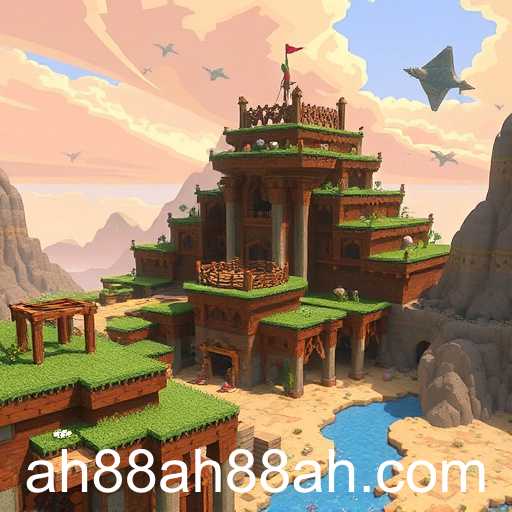Sandbox games offer players a unique blend of creativity and freedom, allowing them to explore vast virtual worlds and create their own adventures. This article delves into the intricacies of sandbox gaming, focusing on its growing popularity among gamers and the variety it brings to the gaming world.
Sandbox games have carved out a unique niche in the gaming world, providing players with unparalleled freedom to explore, create, and manipulate virtual environments in ways that standard, structured games cannot. With the keyword "ah88," these games represent a category that continues to thrive and expand, attracting a diverse audience of gamers who crave creativity minus the restrictions of linear gameplay.
At their core, sandbox games empower players with tools to shape the game world to their liking, whether it's building elaborate structures, sculpting landscapes, or setting their own rules for character development. Unlike traditional games where players follow a set storyline, sandbox games provide an open-ended experience where the only limitations are the player’s own imagination and ingenuity.
Popular sandbox games such as Minecraft, Terraria, and Garry’s Mod have emphasized this ethos by offering an array of features that support creativity and experimentation. Minecraft, for instance, has become legendary for its blocky universe where players can construct anything from rudimentary huts to intricate cities and even functioning computers. Meanwhile, Terraria combines sandbox elements with action-adventure gameplay, encouraging players to delve into the unknown and shift the world around them as they prefer.
The attraction of sandbox games lies not just in their creative freedoms but also in the social experiences they facilitate. Many sandbox games offer multiplayer options, allowing friends and communities to share their worlds and collaborative innovations. This aspect of sandbox gaming fosters a community spirit, where players are not just consumers but active participants in generating content and experiences.
Moreover, sandbox games often incorporate modding capabilities, further extending their longevity and replayability. Players with programming skills or a creative edge can modify existing games or introduce entirely new elements, ensuring these worlds remain fresh and engaging long after their initial release.
The popularity of sandbox gaming continues to grow, attracting players who see gaming as more than just entertainment. For many, it's a chance to put their creative skills to the test, to innovate, and to escape into an unrestrictive world that they control. As game developers increasingly recognize the appeal of these expansive, player-driven worlds, the scope of sandbox gaming is likely to expand even further, introducing new mechanics and increasing complexity that will keep players engaged for years to come.
In conclusion, with the keyword "ah88" highlighting the category, sandbox games remain a cornerstone of the gaming industry. They offer unparalleled freedom, creativity, and involvement, drawing players into immersive worlds where they can express themselves freely and embark on adventures of their own making. Whether played solo or collaboratively, sandbox games promise boundless possibilities, limited only by the imagination.

